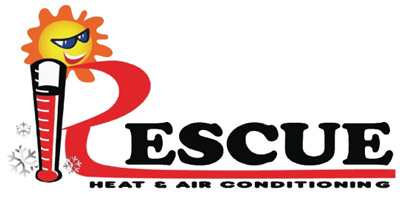It’s always nice when we manage to save money on our utility bills, but it just so happens there’s a way to keep costs down, even when you’re out of the house.
The key is your thermostat. By making the most out of your thermostat, you can structure its daily schedule around your personal preferences. This means establishing various temperature settings for when you’re home, away or even when you’re asleep.
By trying a few of these schedules, you can enjoy comfy temperatures while also keeping more of your money. Check out our guide on how your thermostat can be a source of energy savings:
While at Home
Pretty much whenever you’re home, you want comfortable temperatures. It’s only natural to want your thermostat lower in the summer if you’re indoors to appreciate the cool air.
But the ideal temperature for when you’re in your home during the summer is usually between 78 and 80 degrees Fahrenheit. By adjusting things a few degrees, you’ll keep cool while still keeping your energy bills low.
While Away
When setting the temperature for when you are out of the house in summer, the majority of homeowners will set the thermostat higher for while they’re gone.
If your home is located somewhere a little cooler, you can set the thermostat to temperatures as high as 88 degrees while no one is home before lowering it back to the sweet spot of 78-80 degrees when you or a family member return. This way, your air conditioning unit won’t be working overtime to cool an empty house.
While Asleep
To enjoy a good night’s sleep during the summer, you want a temperature that’s nice and cool. A good rule of thumb is between 68-72 degrees Fahrenheit. You won’t have to worry about getting too hot or too cold when you are trying to get some rest.
Other Ways to Use Less Energy:
- Put in a smart thermostat: Switching to a smart thermostat in the summer can lower energy costs since it can plan your temperature adjustments according to your lifestyle and idea of what comfortable is. They can lower the temperature while you are home or sleeping, before allowing it to warm up when no one is around. With models like the Lennox iComfort, you can adjust the temperature remotely through your smartphone, tablet or laptop. Requesting smart thermostat installation in your Alice home is an effortless way to set the correct temperature no matter where you are.
- Replace current equipment with a newer HVAC system: A new HVAC system can save money in the long run. With greater energy efficiency, you can also count on lower utility bills since more efficient equipment requires less energy to achieve comfortable temperatures. Air conditioning installation in Alice is only a phone call away, so don’t hesitate to reach out to local pros like Rescue Heating & Air who can set you up for success.
- Schedule annual AC maintenance: Hiring a skilled professional to perform regular air conditioning maintenance in Alice can have a big impact on your monthly energy use. If you stay on top of cleaning key components like the coils, checking for damage and clearing ventilation of dust and debris, you may notice your HVAC system run more efficiently. Higher energy efficiency will also reduce strain on important or delicate components and lowers operational costs, resulting in lower energy usage and subsequently, smaller bills.
- Clean or replace the air filter on a regular basis: Regularly changing the air filters in your HVAC system saves money by keeping airflow as smooth and consistent as possible. When filters are old and less effective, your air conditioner will have to work harder, and the added strain may impact the system’s life span and lead to breakdowns.
- Verify your attic has enough insulation: Insulation is a crucial component for any energy-efficient home, keeping the hot air outside and the cool air inside through summer. The North American Insulation Manufacturers Association (NAIMA) suggests that homeowners living in southern climates should possess at least 13-14 inches of insulation, while those in northern U.S. states should have 16-18 inches.
- Check your ductwork: Leaky ductwork can raise your energy bills much more than 20 percent, plus it can affect equipment such as your water heater, clothes dryer and other appliances to get into the atmosphere of your home. Checking your ductwork for leaks and sealing them can help with both these issues.
- Seal all other leaky spots in your home: Sealing up other leaks in your home with caulk, foam sealant or weather-stripping keeps temperatures a little cooler on hot summer days. It’s also important to check for any gaps around windows, doors and even outdoor fixtures. Devoting time and effort to sealing leaks now can help you save a lot in the long term.
